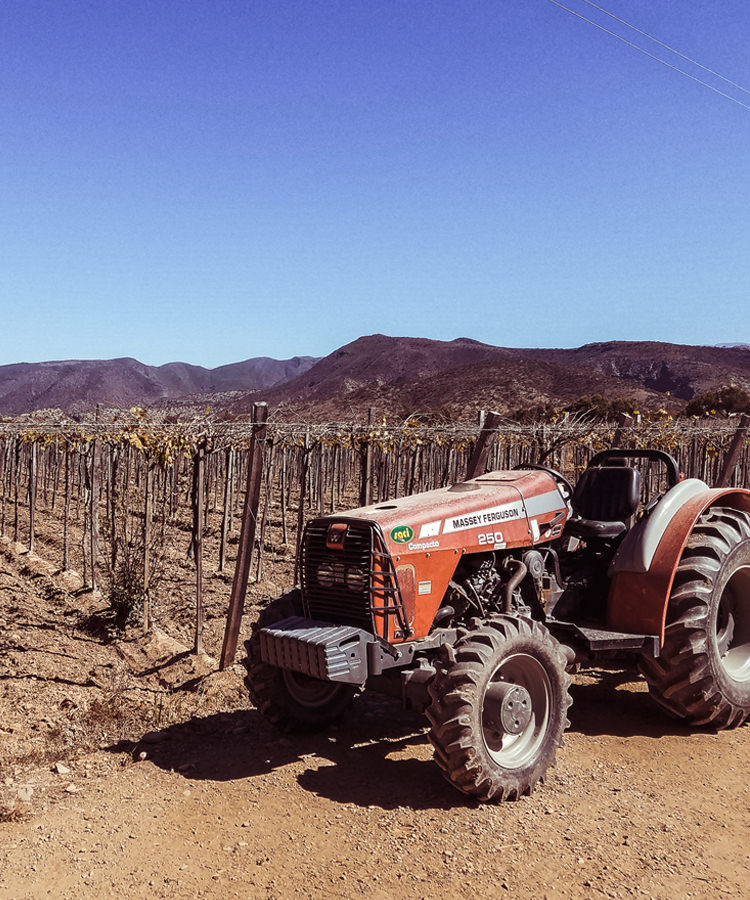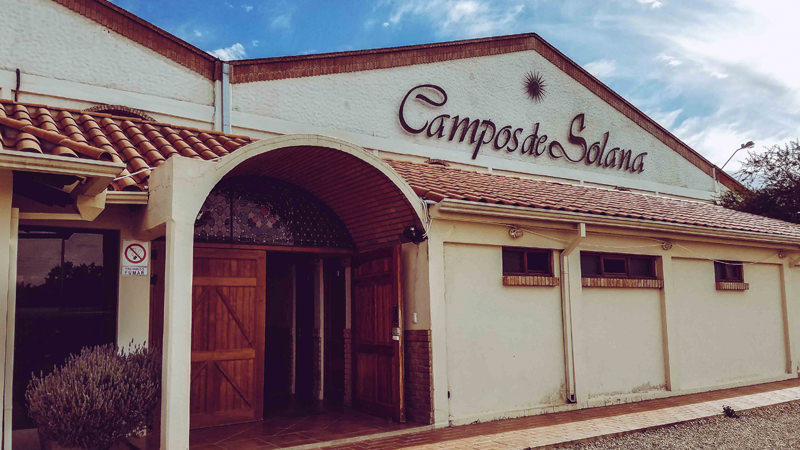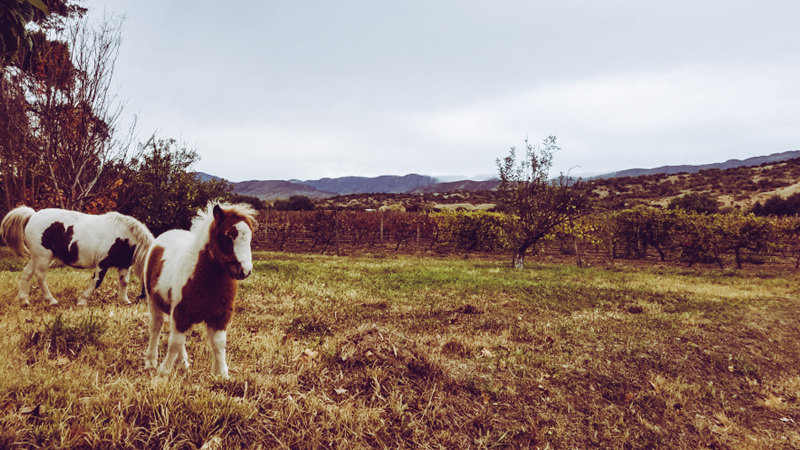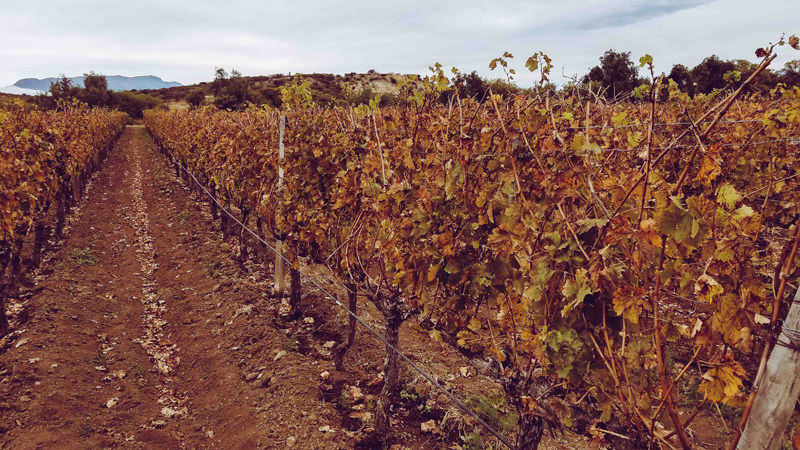If there ever was a Wild West in the wine world, Bolivia is it. This landlocked South American country of roughly 11 million people isn’t even on most wine enthusiasts’ radars, and that’s too bad because its high altitude and proximity to the equator make it something of a vinifera never-never land. Most visitors travel along the country’s Andean spine, visiting the Uyuni salt flats, trekking along the shores of Lake Titicaca, and visiting the markets of La Paz. However, adventurous oenophiles should add the southern region of Tarija, where most of Bolivia’s wines are made, to their list of wine destinations.
Renowned for their hospitality and warmth, tarijeños, as they call themselves, are proud of their wines, the best of which balance a distinct acidity with fruitiness. Often served alongside those wines is singani, a uniquely Bolivian spirit made from the ancient Muscat of Alexandria grape varietal. Cafes and restaurants in the region’s hub city, also called Tarija, serve local beverages with homemade cheeses, delicious grilled meats, and fried pastries. And since most foreign tourists leave little time to explore this lesser-known collection of valleys and foothills, you’re likely to have the wide horizons and rarefied Andean air to yourself.
Day 1:
There are no direct flights from the United States to Tarija; however, there are daily flights offered by carrier Boliviana de Aviación from Santa Cruz and La Paz, where most travelers from the U.S. enter the country. It’s also possible to visit the region by way of Tupiza after touring the Salar de Uyuni, Bolivia’s famous salt flat. From Tupiza it’s a five- to six-hour bus ride to Tarija. Both the bus terminal and the airport are a short cab ride to the city center.
After dropping off your bags at your hotel, perhaps Hotel Los Ceibos with its large outdoor pool and a sauna for post-wine-tasting relaxation, start your imbibing with a trip to the nearby Aranjuez tasting room. Skip the blends and try the “Juan Cruz” Tannat, named after one of the winery’s original employees. He must have been an industrious fellow because this is one delicious red, with flavors of dark fruits and cacao, and an earthiness balanced by a clear acidity. If you have space in your luggage, consider grabbing a bottle of the 2014 vintage for your cellar and letting it collect another two to five years of dust. There’s enough body here for aging, and who doesn’t love reliving an adventure over a glass of wine?
Leave enough time on day one to also get over to Campos de Solana, a winery set among rolling vineyards south of the city. It’s another big producer in the Tarija Valley and its owners also manage the singani distillery Casa Real, so tastings include an opportunity to try something with a little more firepower. Call beforehand to see if head winemaker Nelson Sfarcich is available to give you a tour of the facilities, and make sure to try the impressive single-varietal wines.
On the lighter side is a bright, pale yellow Riesling that had sommelier and wine traveler Lydia Richards raving. “This one caught me off guard,” said Richards after her tasting. “What a nice wine!” Initially restrained, the wine is in full bloom by the bottom of the bottle, displaying notes of lemon, orange peel, and pineapple.
Fans of Bordeaux blends should try the Petit Verdot, often used as a blender but not usually seen as a standalone varietal. It’s an exciting violet-colored wine, with a full body and plenty of blackberry, red cherry, and black pepper flavor. This is also a great place to try out singani: Casa Real offers a clean, floral version of the Bolivian firewater, branded as the black-label “Gran Singani.”
For dinner, swing by the central plaza and sit down for a meal at Taberna Gattopardo. There you can choose between Bolivian staples, such as thin cuts of breaded and fried meats called milanesa, as well as more European-inspired dishes. Linger awhile to people-watch as couples stroll by, or upload your wine photos using the restaurant’s free WiFi.
Grab a nightcap across the plaza at XOXO Restobar or maybe just head back to the hotel for a dip in the pool before tomorrow’s wine adventures continue.
Day 2:
After a quick breakfast at the hotel or a short walk for an espresso at Café Mokka, allow a full day to visit Bodegas Kohlberg’s tasting room on the edge of town and a jaunt to their vineyards further out in the valley.
Although Spaniards first brought grapes to the valleys around Tarija in the late 1500s and early 1600s, fine winemaking didn’t take hold in Bolivia until the 20th century. It wasn’t an easy transition. Even today, Bolivian winemakers struggle with a tiny region suitable for grapes and a reliance on manual harvest techniques. It’s charming to see the small scale of production, but difficult for producers to compete on a global levels.
The largest Bolivian winery, Kohlberg, is a family-owned enterprise with an emphasis on consistent craftsmanship. The family grows grapes on some of the region’s choicest soils, which are in high demand because of their scarcity. In total, Bolivia has around 7,500 acres of land used for grape cultivation, equivalent to just about half of the island of Manhattan. Of that, only some 40 percent is set aside for wine and singani production, making Bolivia a niche producer compared to its more well-known southern neighbors, Chile and Argentina.
A tasting with winemakers Erich and Herbert Kohlberg is a treat. Be sure to try the Ugni Blanc, a single varietal known as Trebbiano in Italy. It’s a medium gold wine that really comes into its own in the high altitudes and ancient lakebed terroir of the winery’s vineyards. “Kohlberg’s clay soils are particularly reflected in this wine,” sommelier Lydia Richards said at the tasting. Its minerality complemented the lemon, melon, and banana notes of the wine — rounded out by just a hint of peach and nectarine. As with many of Bolivia’s fine wines, the Ugni Blanc had a refreshing acidity.
Kohlberg also makes one of the best blends in Bolivia, the “200” Gran Reserva. The winery flexes its muscle with “200,” a powerful blend of Cabernet Sauvignon, Malbec, and Syrah, just released in April in honor of the 200th anniversary of the city of Tarija. The wine’s fruity nose and spiciness is anchored with a year of aging in French oak, giving the red strong enough tannins that it can be enjoyed now or aged for a couple of years.
The best part of the tasting was a peek at what’s to come, with a special sample of barrel-aged reds from the winery’s cellar. Drawn straight from French oak barrels, the Merlot, Malbec, and Cabernet Sauvignon varietals represent Kohlberg’s strong start at making ultra-high-end wines. Wines like these can change as they’re bottled, but definitely keep an eye out for them as they hit the market.
The second part of a tour with Kohlberg was a trip to their vineyards. A third family member, Helmut Kohlberg, presented the family’s vineyards and expansive private event space, complete with a miniature pony. He told the story of the winery’s founder, Julio. Neighbors thought he was crazy when he insisted on using a bulldozer to fill in the ravines running through his land in preparation for planting grapevines. Today the land, an ancient lakebed where fossils still turn up, produces some of the region’s finest wines.
After a long day of travel and tasting, swing by El Fogón Del Gringo Restaurant, across the street from Hotel Los Ceibos. The specialties of the house are big slabs of grilled meats and delicious sausages. But don’t be afraid to load up on the side dishes at the salad bar; they’re just as tasty. And as with all the best restaurants in Tarija, there’s a full list of local wines to accompany your meal.
Day 3:
Grab breakfast at the Mercado Central, three blocks from the main plaza. Be sure to try Tarija’s famous tucumanas, a fried empanada stuffed with ground meat and veggies. Wash it down with a glass of fresh fruit juice or a cup of coffee and you’re set for another day of winery tours.
The first stop is Bodega Sausini, where, after a short walk around the winery, you can get straight to the good stuff. Winemaker Ronald Castellon was trained in Spain but brought his talents to Bolivia, where he’s crafted a brilliant, garnet-colored Merlot. There’s a lot to like about this wine, with sommelier Lydia Richards calling it “one of the most impressive wines in Bolivia.” And the tasting room may be the only way to try it, unless you’re traveling to Europe soon, as buyers in the U.K. recently purchased the vintage.
Fear not, however, as you’ll also be able to try the heart and soul of Bolivian winemaking at Sausini: a mouthwatering Muscat and a deliciously fragrant singani. Bolivian red wines may be making waves today, but arguably nothing is more traditional in Bolivia than Muscats and singanis made with ancient Muscat of Alexandria grapes. The honeydew, peach, and lemon flavors of Bolivian Muscats are singular and Sausini makes one of the best, alongside a stellar singani that captures the true essence of the grape.
The last winery of the day, Bodega Magnus, is one of the smallest on the tour. Like all Bolivian wineries, what Magnus lacks in size it makes up for in heart — or at least heart-straining altitude. Because the country is located less than 23 degrees south of the equator, on the no-go side of the Southern Hemisphere’s typical viticulture belt, the high altitudes of Bolivian vineyards are crucial to slowing grape growth enough to balance the fruit’s sweetness with a mouthwatering acidity.
At Magnus, the wine isn’t the only thing that will have your mouth watering. Wines are served with a spread of homemade pates, cheeses, and preserved fruits amid the cool dampness of the winemaking facility. When sipped on the airy patio overlooking broad stretches of vineyards, the blend of Cabernet Sauvignon, Merlot, and Syrah really holds its ground. It captures the mellow greenery of its surroundings, with aromas of black fruits, pepper and the floral notes of chamomile and rose petals.
With an easy last day, there’s plenty of time to take in an Andean sunset. There’s something about the freshness of the air that seems to bring out the reds and yellows. Maybe it’s because you’re standing thousands of feet above sea level or perhaps it’s some deep-rooted Incan magic. Or could it just be three straight days of drinking wine? Regardless, a trip to Bolivia is a delicious tour of an unforgettable, and little known, corner of the world.



